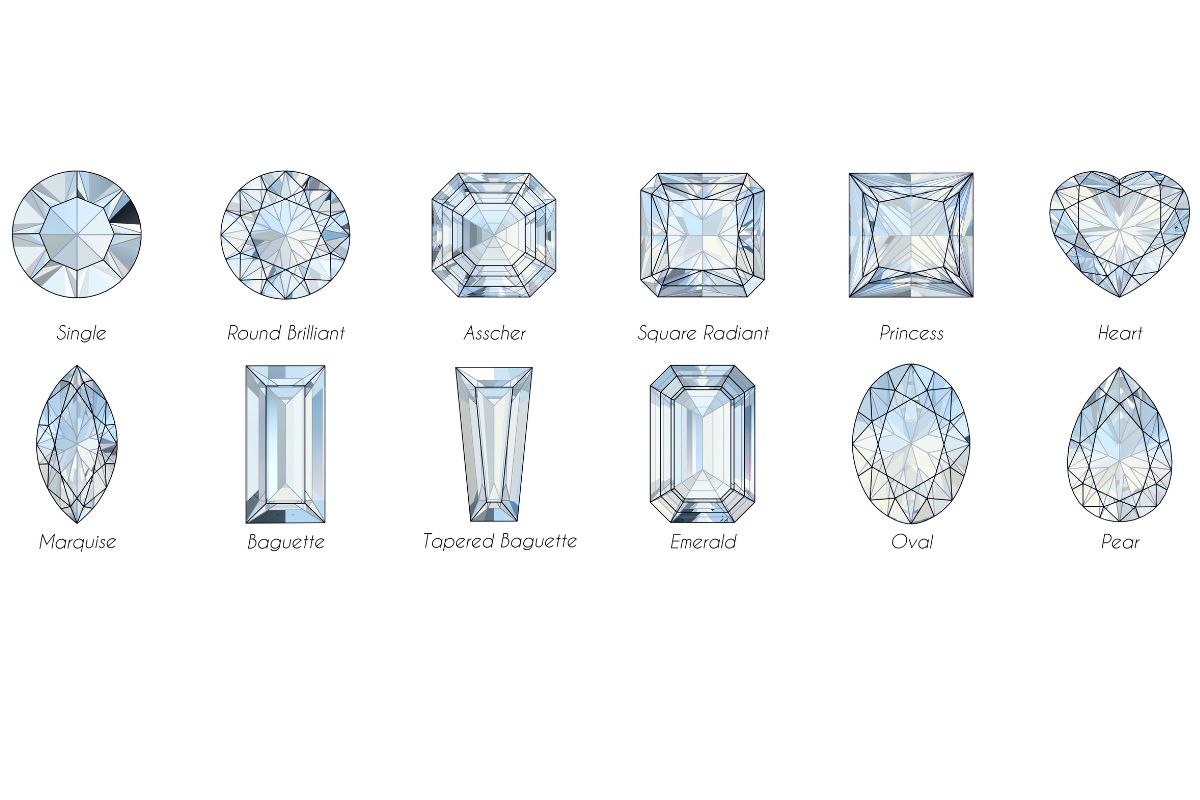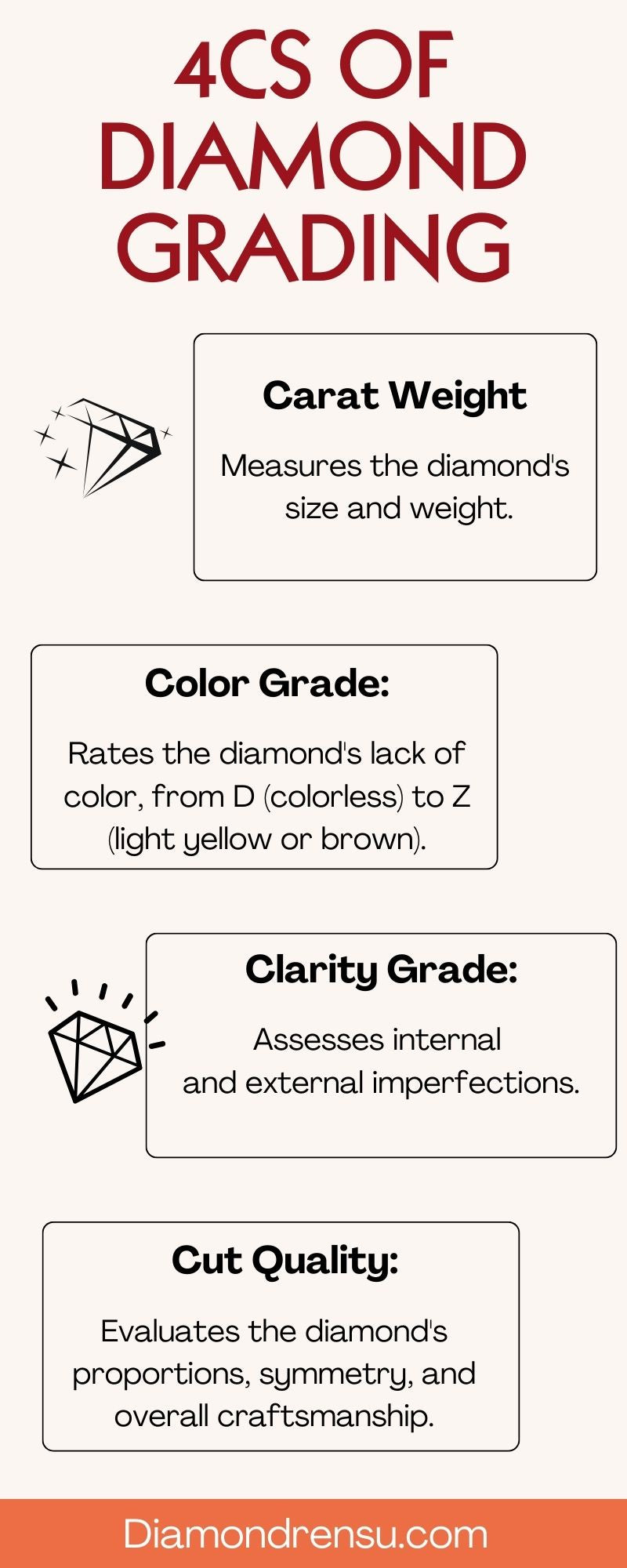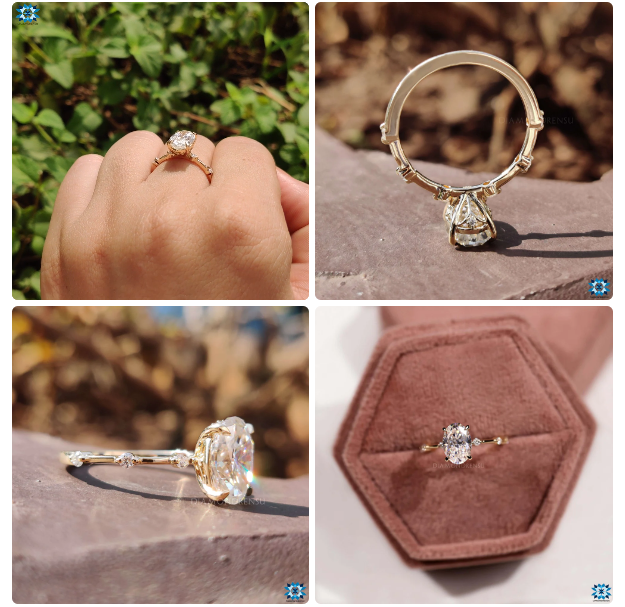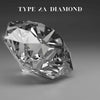
What is an Oval Diamond Bow Tie Effect: Clarity for Shoppers
An oval diamond bow tie refers to a visual effect that can occur in oval cut diamonds, a popular diamond shape beloved for its brilliance and unique appeal. The term 'bow tie' is used because of the appearance of a dark band across the width of the stone, which somewhat resembles a gentleman’s bow tie. This effect is a result of light passing through the diamond and casting a shadow within.
When I examine an oval diamond, I look for the presence of this bow tie, as it can give the stone character and is often an indicator of the cut's quality.
Table Of Contents
- Understanding the Oval Diamond
- Characteristics of Oval Diamond Cut
- The Bow Tie Effect in Oval Diamonds
- Selection and Purchase Considerations
- Oval Diamond and Engagement Rings
- Comparing Oval Diamonds with Other Shapes
- Importance of Diamond Certification
- Tips for Viewing Oval Diamonds
- Frequently Asked Questions
The bow tie effect is not exclusive to oval diamonds; it can also be observed in other fancy shapes like marquise or pear. However, it's most discussed with oval shaped diamonds due to their elongated design and the particular way they are cut.
The severity of the bow tie can vary significantly from one diamond to another, ranging from nearly invisible to quite pronounced.
When assessing an oval diamond for purchase, I pay attention to the prominence of the bow tie, knowing that a minor effect won't necessarily detract from the stone's beauty but rather could enhance its distinctiveness.
Understanding the Oval Diamond
When I consider an oval diamond, I focus on its unique qualities that set it apart from other shapes.
This elongated cut is known for its ability to appear larger than round diamonds of the same carat weight, making it a popular choice for those seeking presence and value.
The beauty of an oval diamond lies in its 58 facets, which contribute to its impressive light performance.
When I examine an oval diamond, I look for a harmonious balance of brilliance, fire, and sparkle.
These elements are crucial as they determine how light dances through the diamond, captivating the eye with every movement.
A particular phenomenon to note in oval diamonds is the bow-tie effect, which occurs when light passes through the diamond to create a shadow that resembles a bow tie. This is not necessarily a defect; rather, it's a natural result of the cut and varies from barely noticeable to more pronounced depending on the symmetry and precision of the cut.
I adhere to the globally accepted GIA's 4Cs (Carat weight, Cut, Color, Clarity) to evaluate an oval diamond's quality.
The cut grade is paramount as it impacts the overall aesthetics.
A well-cut oval diamond should exhibit even color and clarity throughout, coupled with optimal symmetry to enhance its visual appeal.
Lastly, while cut grades are traditionally assigned to round diamonds, I apply similar high standards for assessing an oval diamond's cut.
Though GIA does not offer a specific cut grade for oval diamonds, by examining the cut's depth and table percentage, I ensure that the diamond's proportions give rise to a remarkable display of light.
Characteristics of Oval Diamond Cut

The Oval Diamond Cut is renowned for its ability to maximize surface area, providing a grand appearance with a classic appeal.
As I dive into the specifics, I'll examine the facet configuration, the right length to width ratio for optimal beauty, and how these aspects impact its appearance.
Facet Configuration
The facet pattern of an oval diamond is crucial for its brilliance.
These diamonds typically have 56 to 58 facets, with the main components being the table, crown, girdle, pavilion, and culet.
The arrangement of facets, especially on the pavilion, is designed to optimize light reflection, ensuring a remarkable sparkle.
Length to Width Ratio
The proportion of an oval cut diamond is defined by the length to width ratio, which has a significant influence on the diamond's visual appeal.
A classic oval shape will have a ratio between 1.33 to 1.66; this range tends to produce a balanced symmetry and an attractive elongation effect on the finger. Diamonds outside this range may appear too narrow or broad.
Impact on Appearance
The cut of an oval diamond greatly influences its appearance with respects to both brilliance and perceived size.
An ideal cut ensures a desirable distribution of light, enhancing the diamond's natural sparkle and maximizing the visible surface area.
A higher symmetry grade indicates a well-proportioned cut, which contributes to a diamond’s overall aesthetic quality.
The Bow Tie Effect in Oval Diamonds

When I examine oval diamonds, an intriguing aspect often comes under scrutiny—the bow tie effect, a visible shadow that resembles a gentleman’s bow tie. This effect's presence and its influence on the diamond's appearance and value are noteworthy characteristics that I consider.
Causes
The bow tie effect in oval diamonds appears due to the diamond's facets and how they handle incoming light. I understand that it's not a flaw but rather an optical phenomenon caused by the way the light travels through the diamond, casting a shadow across the central width—the bow-tie.
Oval cut diamonds have a unique facet pattern, which sometimes doesn't reflect light back to the viewer, creating this shadow.
Visibility
The visibility of the bow tie effect can range from nearly invisible to extremely prominent.
I assess this visibility factor under different lighting conditions, bearing in mind that lighting plays a significant role.
Under some lighting, the bow tie might be barely noticeable, while in other lighting scenarios, it can become quite pronounced.
I always ensure to check the diamond from multiple angles to fully understand the visibility of the bow tie.
Affect on Value
The impact of the diamond bow tie effect on a diamond's value can vary.
A subtle bow tie can enhance the diamond's character, while a more pronounced bow tie might be considered less desirable.
I have learned however, the value doesn't solely hinge on the bow tie's strength—it's one of many factors. The overall aesthetics, diamond quality, and personal preference play a crucial role in determining the final value.
Selection and Purchase Considerations
When I select an oval diamond, I focus on the cut grade, the light performance, and the carat weight. These are critical factors that determine the diamond’s beauty and value, especially as they relate to oval engagement rings.
Choosing the Right Cut Grade
The cut grade of an oval diamond is paramount in my selection process.
I go for diamonds that have a high cut grade which is often associated with how well the diamond has been shaped and faceted.
A high cut grade from reputable labs like the GIA ensures that the diamond’s proportions maximize its brilliance and fire.
A well-cut oval diamond will reflect light beautifully and appear visually larger than other diamonds of a similar carat weight.
Evaluating Light Performance
Assessing the light performance of an oval diamond is non-negotiable for me.
I meticulously evaluate how light travels through the diamond because it affects how bright and sparkling the diamond looks.
One aspect unique to oval diamonds is the 'bow-tie effect', which can be a dark area across the center of the diamond.
While a slight bow-tie can be charming, I aim for diamonds where this effect is minimal and does not detract from the stone's overall brilliance.
Finding the Perfect Carat Weight
Finally, the carat weight significantly influences my pick.
Although larger carat weights are often more prized, I believe in finding a balance between size and quality within a budget.
With oval diamonds, I look for stones that offer the best value without compromising on presence.
I always recommend that buyers consider both online options and visiting jewelers' showrooms.
Taking an appointment to view the diamond in person can be valuable, but reputable online jewelers can also provide high-quality selections at competitive prices.
Oval Diamond and Engagement Rings
Oval diamonds are a sophisticated choice for engagement rings, offering a unique blend of classic appeal and distinctive elegance. As a fancy shape that elongates the finger, my focus on these gemstones explores their setting styles and inherent design benefits for bridal jewelry.
Setting Styles
- Prong: The most common technique, where metal claws extend over the corners of the diamond, securing it in place. Prong settings can vary from four to six prongs. For oval diamonds, this setting accentuates the stone's shape and allows maximum light exposure, heightening brilliance. The Engagement & Wedding Rings guide emphasizes the impact of a well-crafted prong setting on the diamond's overall beauty.
- Bezel: Offering a sleek, modern design, a bezel setting encircles the oval diamond with a rim of metal, highlighting its shape while providing exceptional security. This style lends itself to a more contemporary look, often preferred by those seeking minimalistic elegance.
- Halo: For added brilliance, a halo setting features a center oval diamond encircled by smaller, pavé-set stones. This amplifies the ring’s visual presence and is a desirable choice to enhance the size and sparkle of the center stone without a steep increase in cost.
- Split Shank: A split shank setting divides the band into strands that may intertwine or run parallel before joining the setting, drawing the eye to the oval diamond. This can add a dramatic effect and offers a different level of complexity and design detail.
Design and Elegance
For those drawn to finer details in an engagement ring, the oval diamond exhibits a sense of design finesse and creates an air of elegance. The elongated shape of these diamonds provides a flattering effect on the wearer's finger, making it appear more slender and longer. The fancy cut also tends to have a larger surface area than round cuts of the same carat, giving the illusion of a bigger diamond, which I find to be smart and budget-effective.
In terms of design, oval engagement rings offer versatility that suits a range of personal styles, from vintage-inspired to ultra-modern. The balance between the classic and the avant-garde in oval diamonds supports an array of fine jewelry settings, making it a standout choice for an engagement ring that truly reflects individual beauty and elegance. With their distinctive bow-tie effect, a subtle shadow across the center of the stone, oval diamonds exhibit a charm that is both unique and timeless. My attention to perfection ensures that the bow tie is well-managed, enhancing the stone's visual appeal, as noted in Jewelry & Gems—The Buying Guide.
Pairing an oval diamond with the right setting plays a crucial role in crafting an engagement ring that both captivates and embodies a timeless elegance suitable for daily wear.
Comparing Oval Diamonds with Other Shapes

When it comes to diamond shapes, the oval diamond and round brilliant cut are among the most popular. Each shape has unique features that cater to different aesthetic preferences and style considerations.
Round Brilliant Diamonds
Round brilliants are the archetype of diamond cuts and have set the standard for all other shapes. When I compare an oval diamond to a round brilliant, I notice round brilliants excel in their ability to reflect light, resulting in exceptional brightness and fire. This is due to their symmetrical shape and the precision of their facet patterns. A round diamond typically has 58 facets, which allows for maximum light reflection. The dimension of round diamonds plays an important role in their proportions, affecting their overall brilliance.
Fancy Cut Stones
On the other hand, fancy cut stones like oval diamonds are celebrated for their elongated shape, which can create the illusion of a larger size for the same carat weight. Fancy shapes, including pears and oval diamonds, often have a distinctive characteristic known as the "bow-tie effect" – a dark area across the center that resembles a bow tie. This phenomenon occurs due to the stone’s facets and the way they reflect light; it's more noticeable in some stones than others. When assessing an oval diamond, I often look for a minimal or absence of a bow-tie effect, as this can detract from the stone's visual appeal. Nevertheless, many fancy shapes are prized for their unique look and the individuality they offer compared to round brilliants.
Importance of Diamond Certification

When selecting an oval diamond, a pivotal element to consider is certification by a reputable organization such as the GIA (Gemological Institute of America). This certification ensures that the diamond meets quality standards and the characteristics are precisely documented.
Understanding the Grading Report
A grading report from an established entity like the GIA is a testament to a diamond's authenticity. As a gemologist, I can affirm that these reports provide an accurate assessment covering the 4Cs—carat, cut, color, and clarity. For an oval diamond, the report details the presence and extent of the bow-tie effect, a light and dark pattern resembling a bow tie that can be seen in the stone's center. Knowledge about the intensity of this effect can significantly influence a diamond's value.
ASET Test Relevance
The ASET (Angular Spectrum Evaluation Tool) test is crucial in understanding light performance in diamonds. I have witnessed firsthand how this test reveals how well a diamond interacts with light, showcasing the stone's brilliance and fire. This information provides additional depth beyond the traditional diamond grading report and can be particularly telling for shapes like oval diamonds where light can play differently along the elongated facets.
Tips for Viewing Oval Diamonds
| Aspect | Tips |
|---|---|
| Shape | Look for a well-proportioned oval shape without noticeable asymmetry. |
| Bow Tie Effect | Avoid prominent bow tie shadows across the width of the diamond. |
| Length-to-Width Ratio | Consider your preference for elongated or more rounded oval shapes. |
| Facet Pattern | Inspect the facet pattern to ensure even distribution of brilliance. |
| Clarity | Check for clarity characteristics and consider their impact on diamond appearance. |
| Brilliance | Observe the diamond's sparkle and fire under different lighting conditions. |
When I'm examining oval diamonds, the aim is to identify their qualities, such as the bow tie effect, which varies from non-existent to prominent. Assessing an oval diamond's cut requires attention to certain key aspects that can significantly impact appearance and value.
Using 360 Degree Videos
I make use of 360-degree videos when I need to evaluate oval diamonds online. These videos offer a comprehensive view around the diamond, allowing me to observe its symmetry and the extent of the bow tie effect from all angles. A diamond that appears good or very good in videos tends to have minimal bow tie presence and enhanced brilliance.
Magnification and Inspection
Inspecting diamonds at higher magnification levels is crucial for scrutinizing finer details. I look for any signs of a bow tie effect under magnification to evaluate whether it's non-existent, good, very good, or poor. This close-up view lets me discern the precision of the cut, the light performance, and any inconsistencies within the diamond.
Also Read
Frequently Asked Questions
In this section, I'll demystify the bow tie effect in oval diamonds, covering its impact on aesthetics and value, as well as discussing if it can be minimized or eliminated.
How can one minimize the presence of the bow tie effect in oval diamonds?
To minimize the bow tie effect in oval diamonds, one should look for stones with good symmetry and a shallower depth to ensure the light is distributed more evenly across the diamond's surface.
What is the bow tie effect observed in some diamond cuts?
The bow tie effect is a dark shadow that stretches across the center of the stone, resembling a bow tie, and is typically found in elongated diamond cuts like ovals, due to uneven light distribution.
Does the bow tie effect impact the value of an oval diamond?
Yes, the prominence of the bow tie effect can affect the value of an oval diamond; a pronounced bow tie is less desirable and can decrease the stone's value.
Can the bow tie effect be completely eliminated in oval cut diamonds?
While the bow tie effect cannot be completely eliminated in oval diamonds due to their shape, good cutting techniques can reduce its prominence, making it less noticeable.
What are the visual implications of the bow tie effect on the appearance of a diamond?
The visual implications of the bow tie effect include a reduction in reflected light in the diamond's center, which can potentially detract from the stone's brilliance and overall aesthetic appeal.
How does the bow tie effect differ between various diamond shapes?
The bow tie effect varies among diamond shapes. It is more prevalent in elongated shapes like oval, pear, and marquise cuts. This is due to their cut proportions and facet patterns impacting light reflection.
Checkout some of our top collections:
- Moissanite Engagement Rings
- Moissanite Earrings
- Moissanite Bracelets
- Moissanite Solitaire Engagement Rings
- Moissanite Mens Engagement Rings
- Moissanite Princess Cut Stones
- Lab Grown Engagement Rings
- Lab Grown Diamond Earrings
- Lab Grown Diamond Wedding Bands
Leave a comment
Please note, comments must be approved before they are published.











